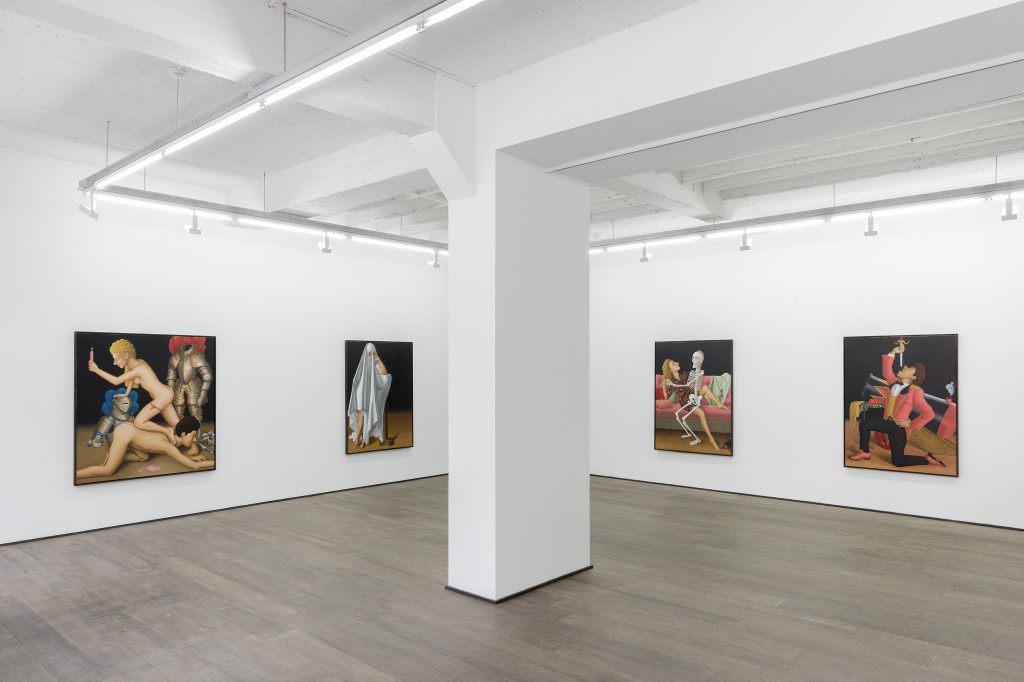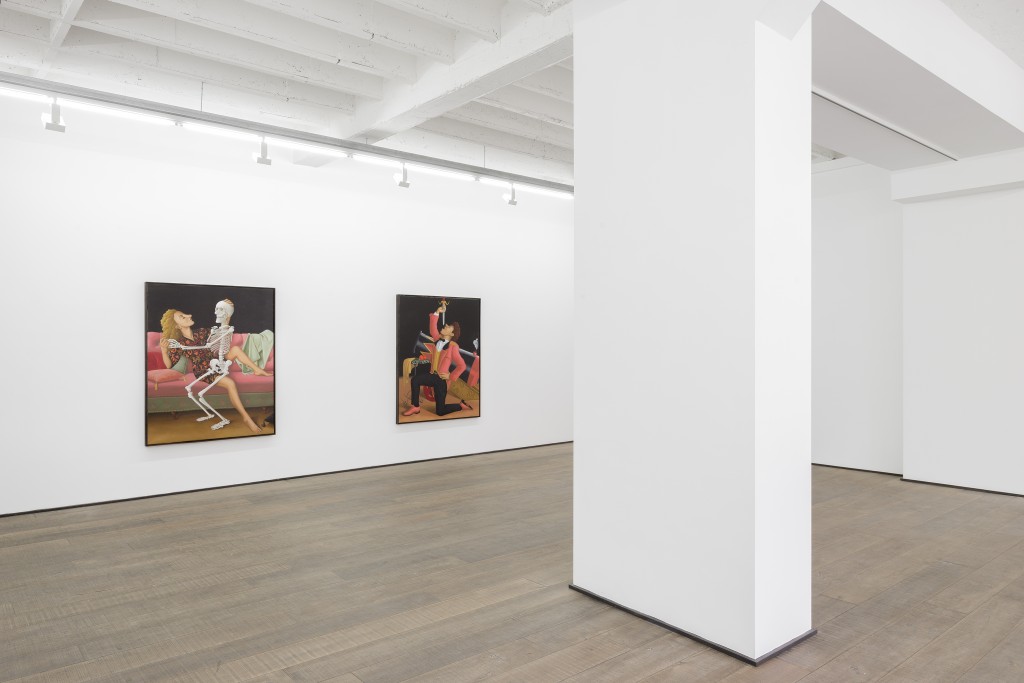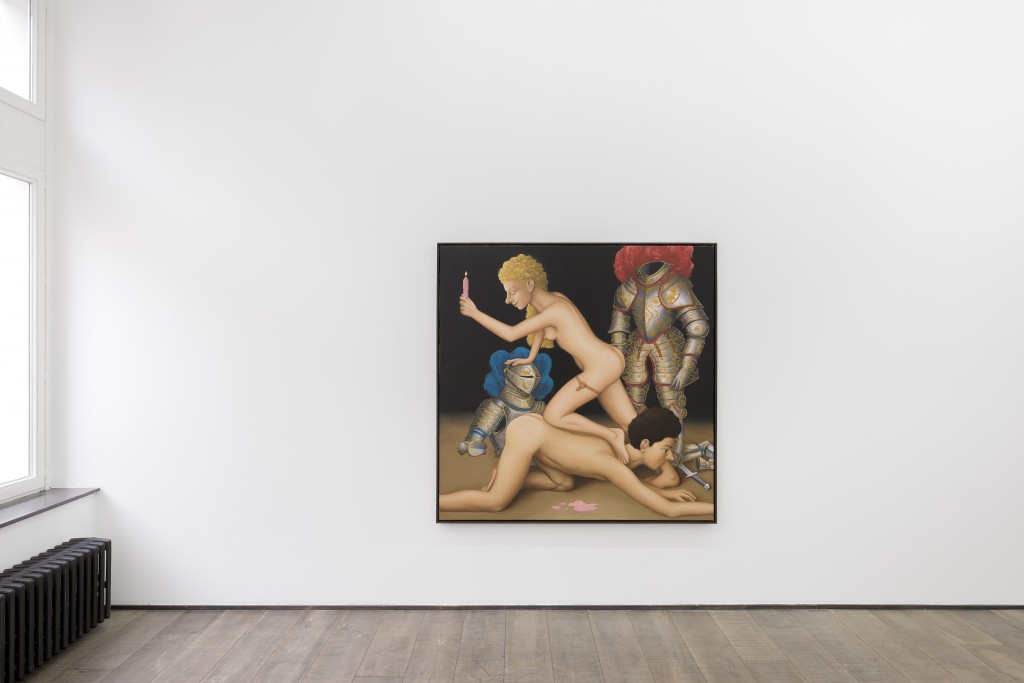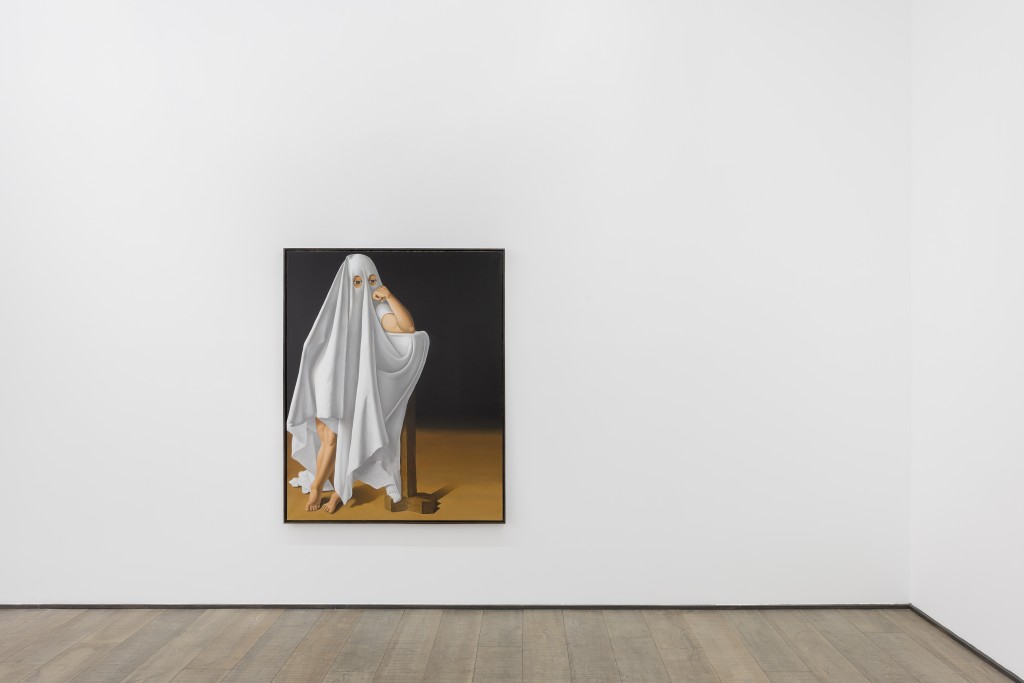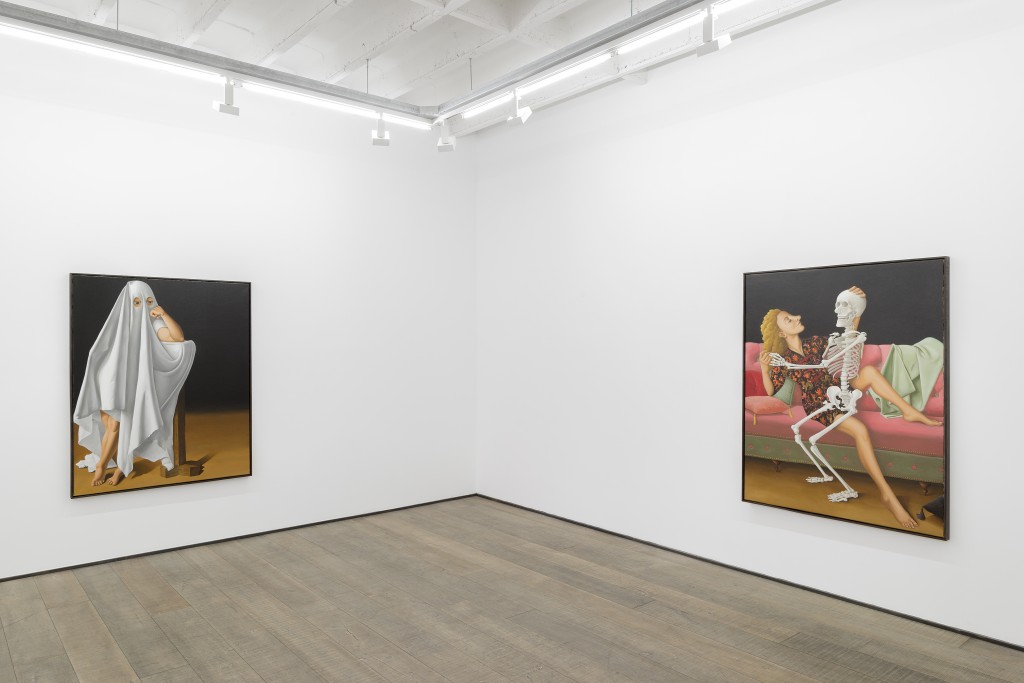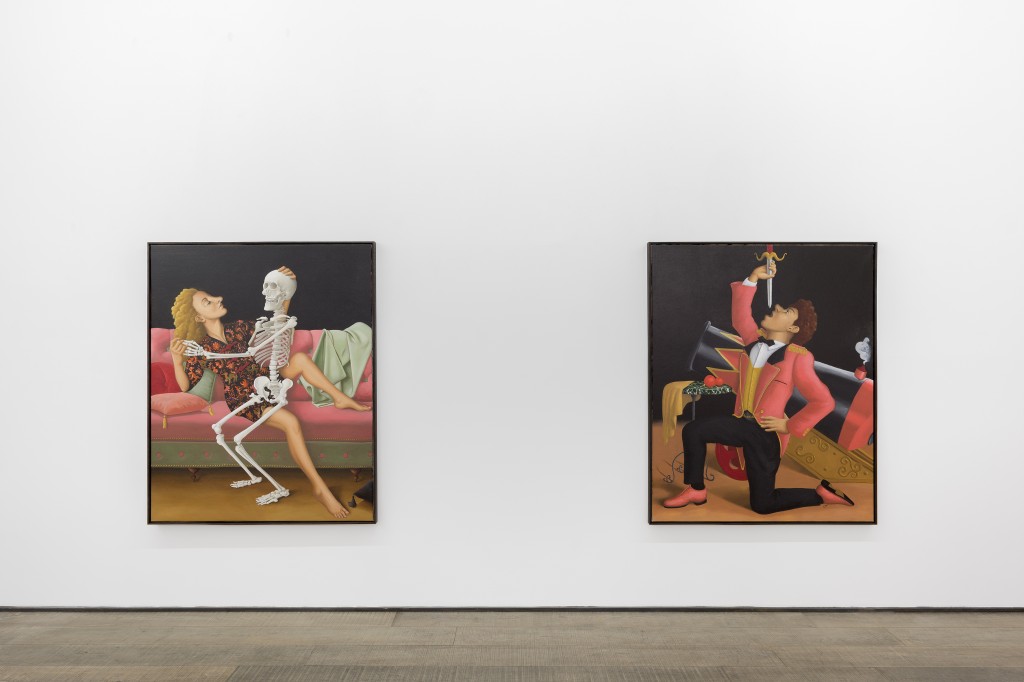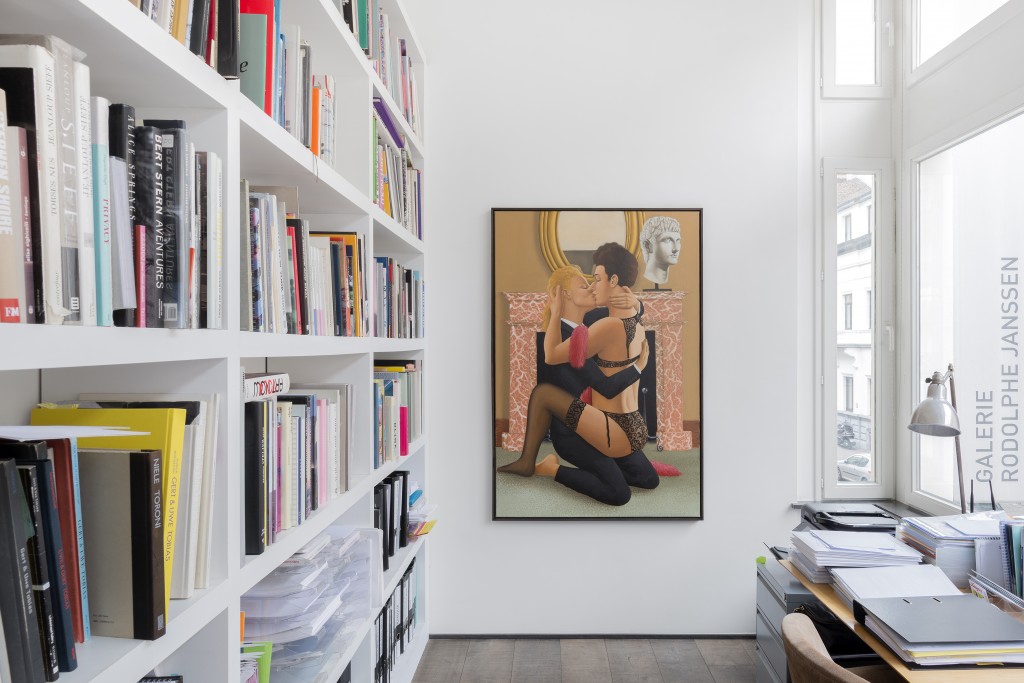Installation views
p
p
With his newest body of works, London-based Italian artist Patrizio Di Massimo devotes himself entirely to painting, the crux of his artistic practice. For an artist who is known to engage across many media, this essentialist return to works on canvas is born from his ongoing desire to confront the medium exclusively and directly. For his first solo exhibition at rodolphe janssen it becomes Di Massimo’s prevailing language, as the self-taught painter explores the body as a cultural site.
Standing before Di Massimo’s towering figures, our gaze rests on spectacles of human behavior. The curtain pulls back and subjects pose and perform as if on a stage or in a scene along a mysterious plot line. If portraiture is the exploration of human nature, then Di Massimo reveals a human being entangled in situations of violence, hedonism, and wantonness. What sympathy surfaces here as we behold others attempting to extend beyond themselves, the confines of boredom, the drudgery of the quotidian, and their own basic humanness? It is of bread and circuses, as though we have cried entertain us and Di Massimo’s characters oblige, at an apex of tragedy and humor.
Di Massimo positions the viewer as a cautious voyeur to a decisive moment: storylines balance on a tipping point before the slip of a knife or the drip of hot wax. Displayed in a classical presentation, each work is a blend of references: postmodernism, Otto Dix, and Walt Disney inform his distinguished style. Black backgrounds obfuscate speculations on place and the unknown looms in darkness. Nevertheless, our curiosity pervades and we seek out clues in objects, attempt to infer them with meaning, but it is in vain. Nothing concrete arises. Di Massimo has created a conundrum, obscuring any direct paths towards truth or knowledge. What is effectuated here is a brilliant subversion of cultural symbols and meaning making – we are not meant to know or, better said, we cannot ever really know.
Di Massimo does not paint the other, rather each work is somewhat a self-portrait. He poses for his studies of the male body while his partner stands in for female figures. This is, after all, about performance and acting, and a private exploration of the human form through fantasy and projection onto one’s own ego. In self-portraiture there is a rapprochement of maker and subject, in what is, for Di Massimo, an intuitive and fragile process. We behold a metaphoric undressing, a candid removal of the proverbial armor which one dons in daily life.
Subtle fear and expectation of danger dangles in the air, extending time. Di Massimo’s work is a watershed of desire, a violent release. While the story is unfinished, the direction is clear: what is undone cannot be mended; what may be damaged may not be healed so readily.
Kate Brown
